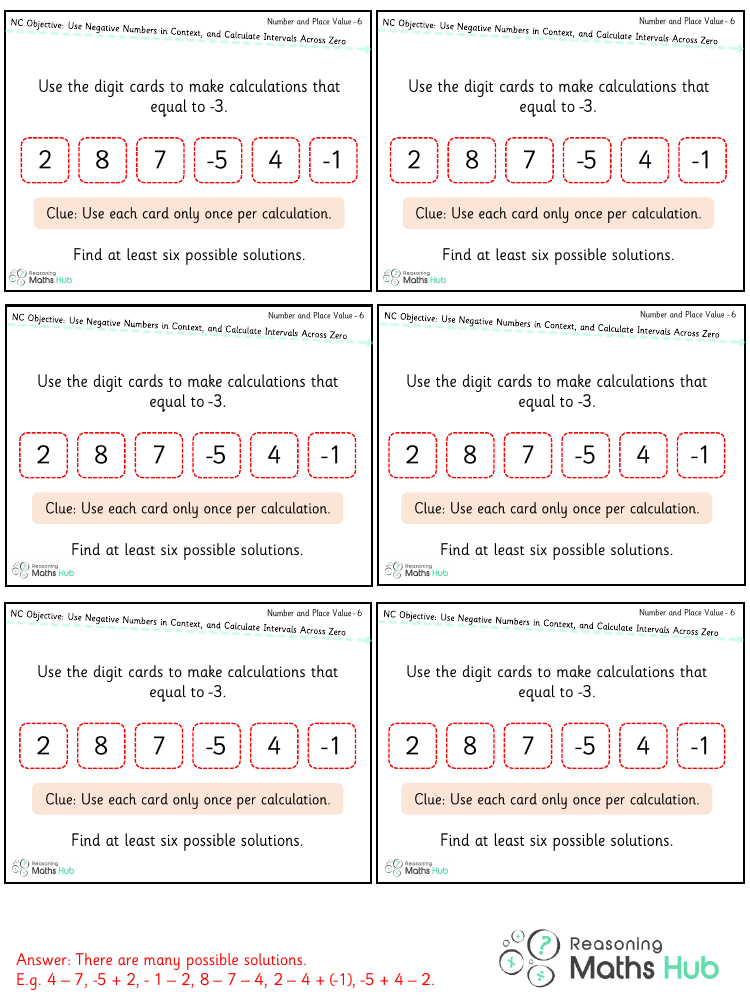Use negative numbers in context, and calculate intervals across zero - Reasoning

Maths Resource Description
Understanding negative numbers and calculating intervals across zero are fundamental skills in mathematics that have practical applications in various contexts. In real-world scenarios, negative numbers can represent temperatures below freezing, bank account overdrafts, or elevations below sea level, among other things. For instance, if the temperature drops from 3 degrees Celsius to -2 degrees Celsius, the interval calculation would involve crossing zero. This change represents a decrease of 5 degrees, demonstrating how intervals across zero are computed.
Calculating intervals across zero requires a solid grasp of the number line and the ability to recognise that crossing zero involves a transition from positive to negative values, or vice versa. When reasoning through problems involving negative numbers, it's important to consider the direction and magnitude of change. For example, if a submarine descends from a depth of 40 metres above sea level to 60 metres below sea level, the interval calculation must account for crossing zero. In this case, the total change in depth is 100 metres, which is the sum of the absolute values of the starting and ending points. This concept is crucial in many mathematical operations, including addition, subtraction, and understanding the distance between numbers on the number line.
